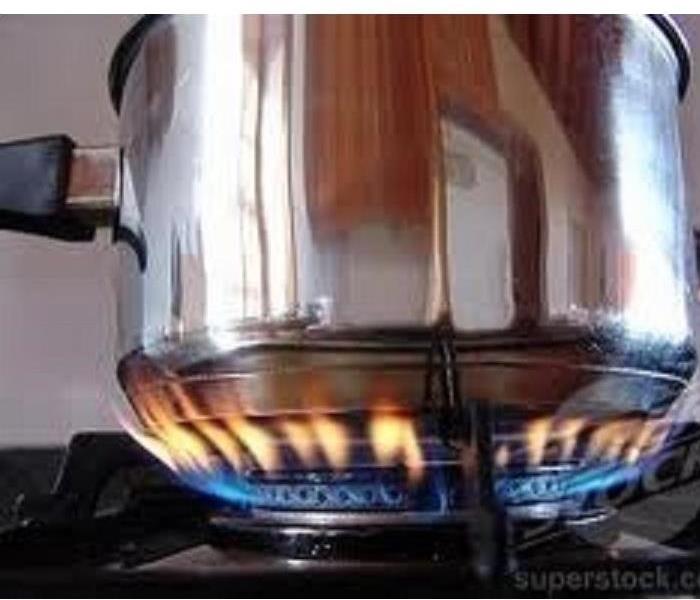Protein Fires Are A Unique Challenge
10/17/2017 (Permalink)
Contrary to most house fires that occur, the typical kitchen fire or “protein fire” produce little visible smoke residue. Protein fires create an especially unique restoration challenge. The low level of heat reduces the animal fat and food protein and leaves a thin layer of film on surfaces. Many homeowners mistakenly underestimate the damage as there may be little or no black residue that you would expect to see after a typical fire. The layer of film that is produced from these fires can create a rancid strong odor that also compromises the structure and contents. These protein residues penetrate cabinets, drawers, air ducts, furniture, clothing, draperies etc. Here are some important facts regarding this type of fire.
- Protein fires generally leave little visible residue that can sometimes be overlooked at first.
- They create a significantly more repugnant smell than most other fires.
- The nature of the burn causes the odor to permeate structure and furniture even more completely than other fires.
- Require extremely thorough cleaning by a trained professional to remove the odor.
- Sometimes require a sealing agent or even repainting to completely eradicate the odor.
- May require multiple attempts and methods to achieve customer satisfaction.
It is also important to recognize that perception of odor is highly individual. There are no tools available to “measure” smell, and as a result, a homeowner may perceive odors that technicians or even neighbors cannot. Often, because of the strong link between smell and memory, a homeowner may experience “phantom odors” where the memory of the event causes reproduction of the odor even after thorough cleaning. It takes extensive cleaning of walls, floors, ceilings and contents of the home to rid the home of these odors and should be handled by professional cleaning and restoration company no matter what size of job.






 24/7 Emergency Service
24/7 Emergency Service
